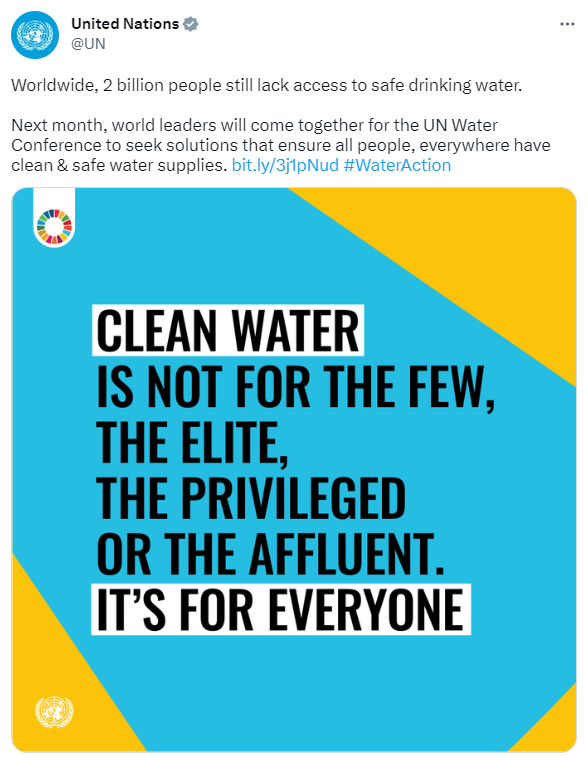Professor Katrina Charles, REACH Co-Director, University of Oxford
With all the information coming out of the UN-Water Conference this week, and the commitments to the Water Action agenda, there are a lot of statistics flying around about the status of access to drinking water services. One often-seen headline is that 2 billion people don’t have access to safe drinking water (see examples of website that use this statistic at the bottom of the blog). This is a shocking statistic in this modern era, but is it telling the whole story? And what do we need to do to achieve universal access to safe drinking water by 2030?

The statistic of 2 billion people comes from the SDG monitoring that is led by the UNICEF-WHO Joint Monitoring Programme. Accurately speaking, this refers to the estimated 2 billion people without access to safely managed drinking water, an indicator that includes water that is free from faecal contamination and key chemical contaminants, that is available when needed and on premises. In reality, the number of people without access to drinking water of the quality many of us take for granted is likely to be much higher.
This measure doesn’t just rely on water quality sampling data but includes information on availability to better represent the quality of water that people are consuming. Water on premises that is available when needed is important because it helps people make the choice to use safe water. If water isn’t available when needed, people are more likely to use alternative – and often unsafe – sources to supplement their needs. If water isn’t available on premises someone needs to go and collect it, perhaps from a poor quality surface water source, and likely creating more opportunities for contamination during storage and transport.
The 2 billion statistic, like any global estimate, is based on limited data. How we measure whether water is free from contamination is one area where there are key limitations on the data. Firstly, most data on faecal contamination is measured in the dry season only, when access is easier. But faecal contamination of water supplies increases with rainfall and with extreme weather events. Secondly, many more will have contaminants in their water that aren’t tested or reported, such as arsenic, fluoride, lead, manganese, and pesticides.
This suggests it is likely that many more than 2 billion people don’t have access to safe drinking water year-round, with implications for their health and wellbeing. And this number will continue to rise with increasingly frequent extreme weather events degrading water supplies and forcing people out of their homes. Climate change and conflict make it harder to achieve the target of universal access to safe drinking water by 2030.
Clean water is a human right, but how can we deliver it? 8 out of 10 of people in that estimated 2 billion live in rural areas in least developed countries, like Bangladesh. With SafePani we are working with the Government of Bangladesh and HYSAWA to deliver safer drinking water for schools and health centres in rural Bangladesh. Using a professional service provider to monitor and act on water quality – including responding to seasonal risks and monitoring chemical hazards – we have built accountability into district water service provision, resulting in safer water for students and patients. With new government investment, the SafePani model offers a pathway to scale up safely managed water in Bangladesh.
Examples of websites and organisations using the “2 billion people without safe drinking water” statistic:
- World Health Organisation, ‘Our lifetime opportunity to enable water, sanitation and hygiene for all’
- World Economic Forum, ‘This is what needs to happen at the UN Water Conference, according to experts’
- Circle of Blue, ‘UN Conference on Water Aims to Rally Support for Ambitious Goals’
- The Guardian, ‘Number of city dwellers lacking safe water to double by 2050’
- Norfund, ‘Million to gain access to clean drinking water with new Norfund Investment’
- Tweet from the UN.

